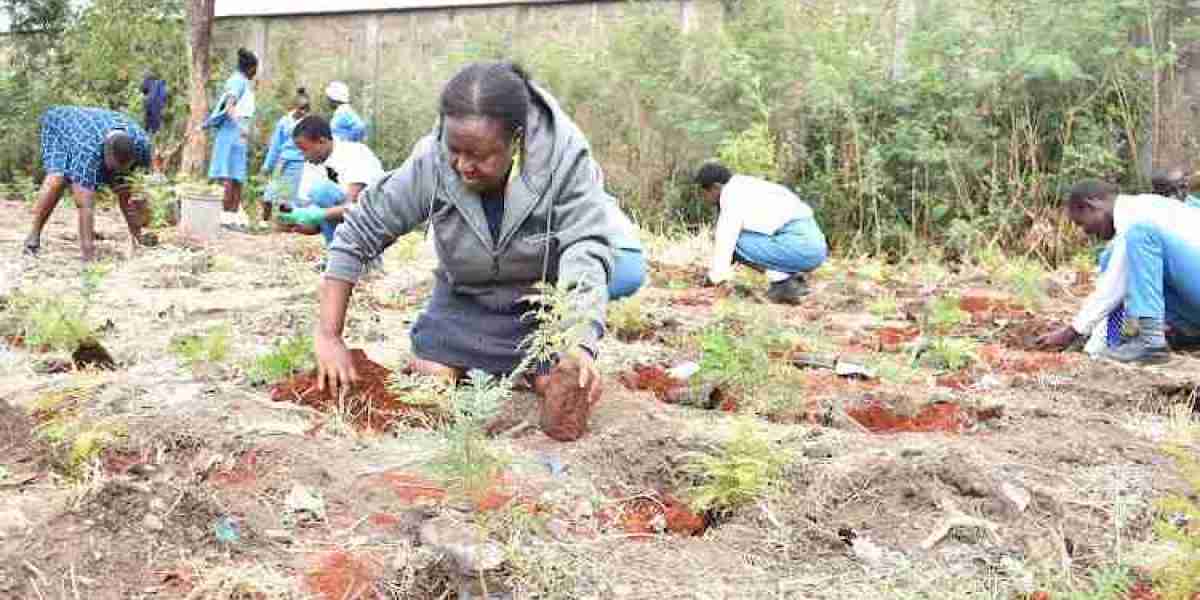- Kenya seeks to hit 10% forest cover by 2030.
- Started in 2021, the initiative has so far seen 20 schools in Nairobi, Kajiado, and Embu plant at least 8,000 trees.
Regional cable maker, East African Cables is inspiring school-going children in Kenya to 'plant a virtue in a tree' in an environmental sustainability campaign geared towards the country's collective goal to hit 10 per cent forest cover by 2030.
On Wednesday last week, the listed cabler was at Dandora Secondary School, where at least 1,000 trees were planted as students affirmed their strong virtues in a goal to save Mother Nature from the adversities of climate change.
According to EA Cables' head of procurement, Joyce Mbugua, the firm was motivated to come back to Dandora Secondary due to the students' unrivalled commitment to the environment and purpose in their lives.
"We are happy to note that all 700 trees planted during the previous visit are surviving. Students have dedicated their resources to this," Mbugua said.
Started in 2021, the initiative has so far seen 20 schools in Nairobi, Kajiado, and Embu plant at least 8,000 trees.
She told the Star that its tree-planting programme is driven by a clear and compelling "why"—the need to mitigate the environmental impact of its business operations, which rely on timber to package its armoured cables for logistics convenience.
"The impact of East African Cables' tree-planting programme extends our primary reason, which is directly linked to our use of timber for packaging finished products," she said.
The cabler supplies at least 12 countries in Africa. It says that it is actively taking steps to replace the timber it consumes to not only ensure a sustainable supply of packaging materials for its business but also reduce the strain on forests.
East African Cables has partnered with the Centre for Leadership and Character Development (CCL), which seeks to inspire and support the achievement of 10 percent forest cover through the cultivation of green economy projects in alignment with Kenya’s Vision 2030 and the Sustainable Development Goals.
Kenya's shift to a green economy could generate $45 billion by 2030, as well as greater food security, a cleaner environment, and higher productivity of natural resources.
The Green Economy Assessment Report by the Kenyan government and the United Nations finds that the transition to an inclusive, low-emission, resource-efficient green economy will result in stronger economic growth and increased wealth creation opportunities.
"Under a green economy scenario, with an investment of two percent of GDP, national GDP would exceed a business-as-usual scenario by about 12 percent, or Sh3.6 trillion by 2030," the study reads in part.
Per capita, national income would be nearly doubled, from Sh39,897 to Sh69,702.
Under a business-as-usual investment scenario and a two percent investment, GDP would only increase to Sh53,146.
The firm's commitment to environmental sustainability is by default in sync with President William Ruto's national goal to plant at least 15 billion trees by 2032, of which corporate entities have committed an equivalent of Sh6 billion.
The renewed efforts reflect Kenya’s commitment to achieving the United Nations-recommended minimum of 10 percent forest cover per country, a target enshrined in national law.
Despite falling short of the initial goal to surpass the 10 percent mark by 2022, the national forest cover has increased to 8.8 percent from 5.9 percent in 2018, according to the National Forest Resources Assessment (NFRA) report.
The NFRA report also estimates Kenya’s overall tree cover, defined as tree patches outside designated forest areas exclusive of forest cover, at 12.1 percent.
According to East African Cables, this sets an example for other companies within the industry and beyond.
It demonstrates that corporations can take proactive measures to mitigate their environmental impact and contribute to a more sustainable future.
It adds that over time, the trees planted through this program will continue to grow, providing even more extensive ecological and environmental benefits.


